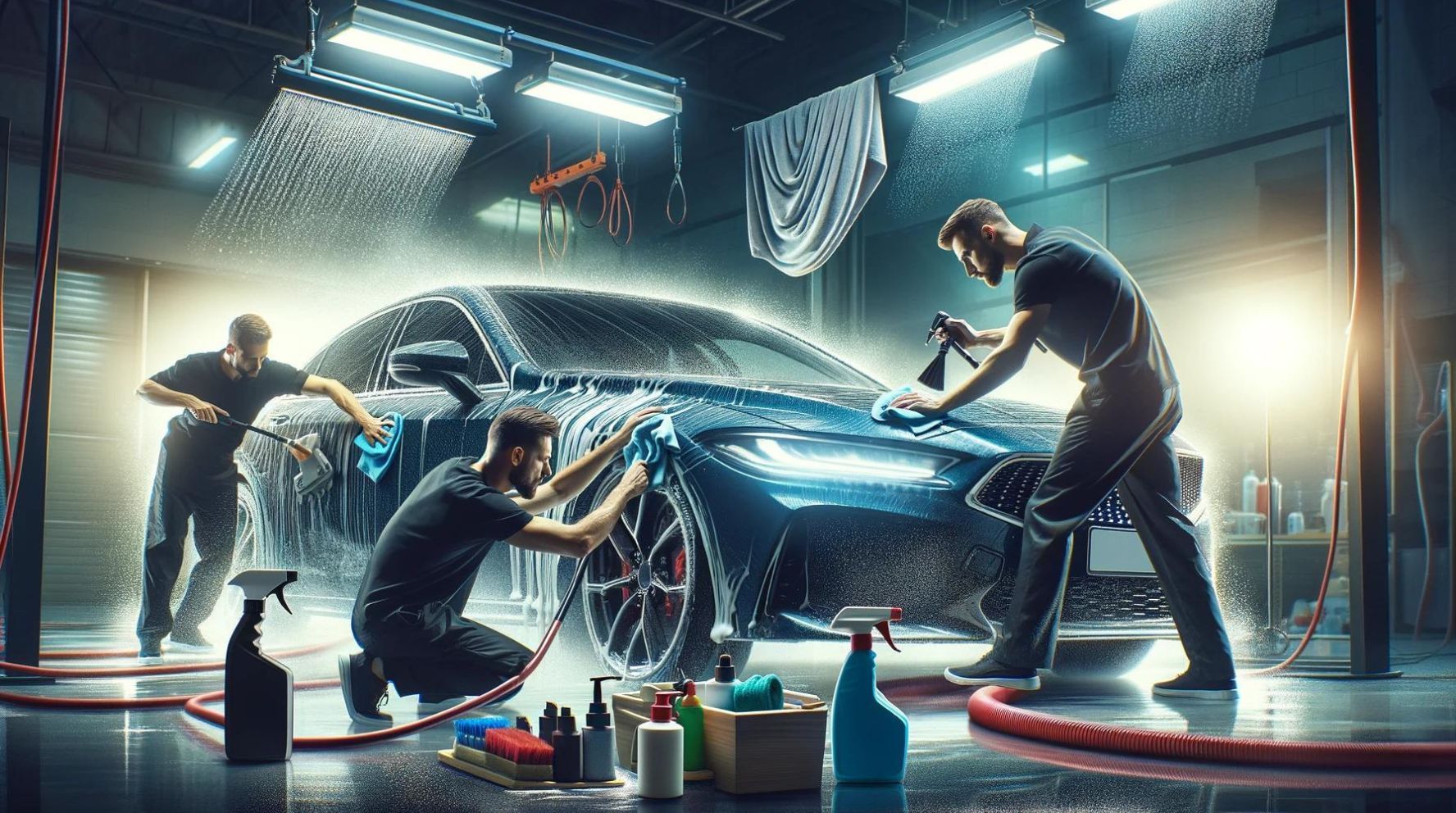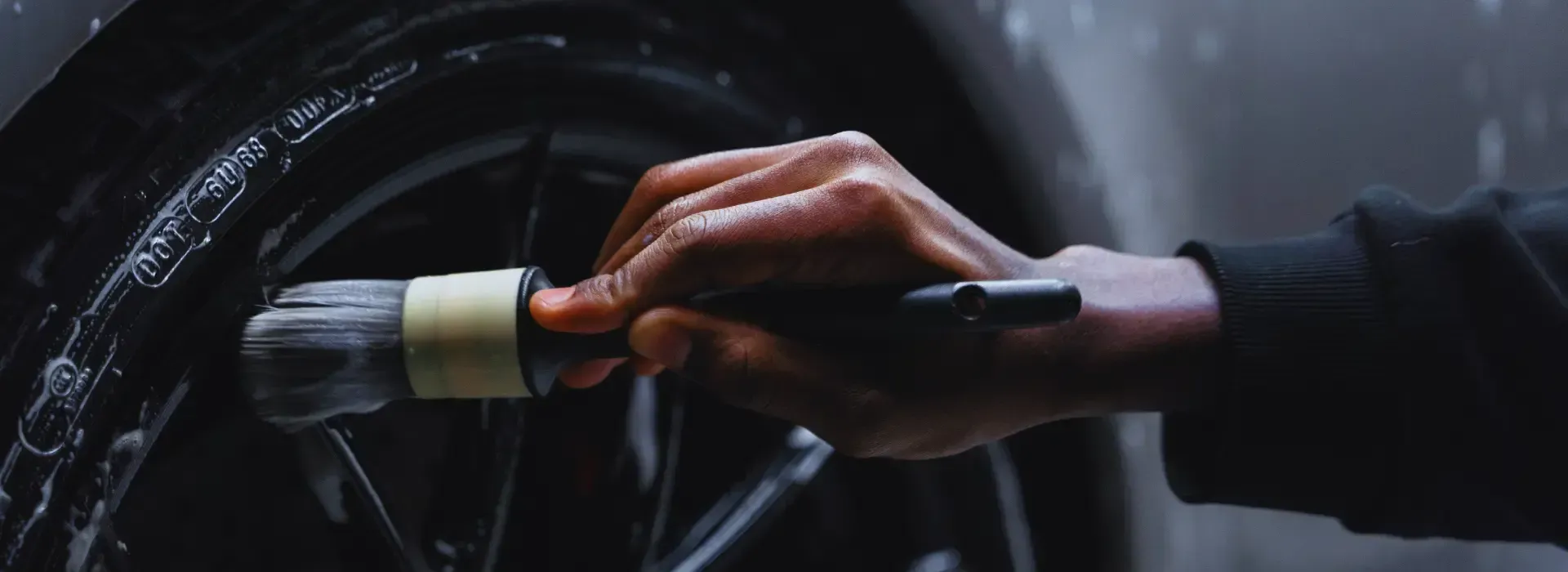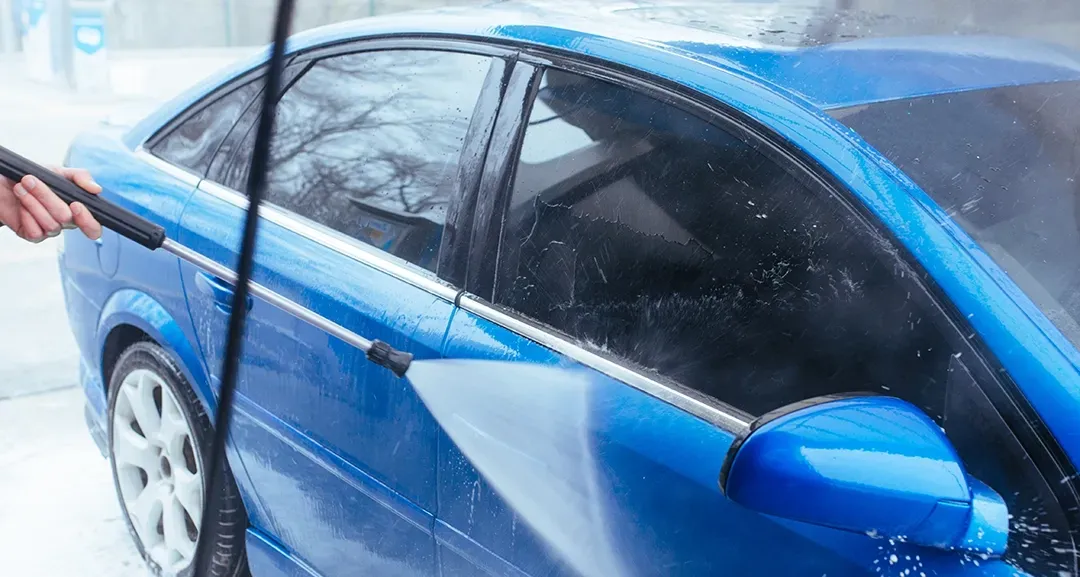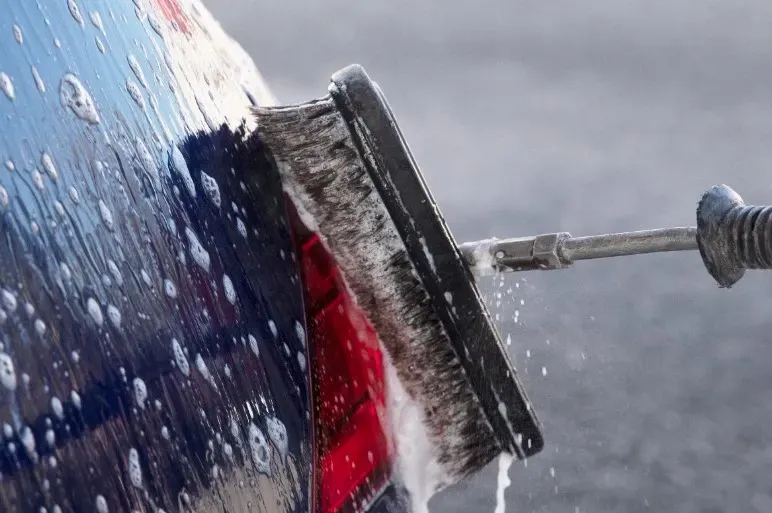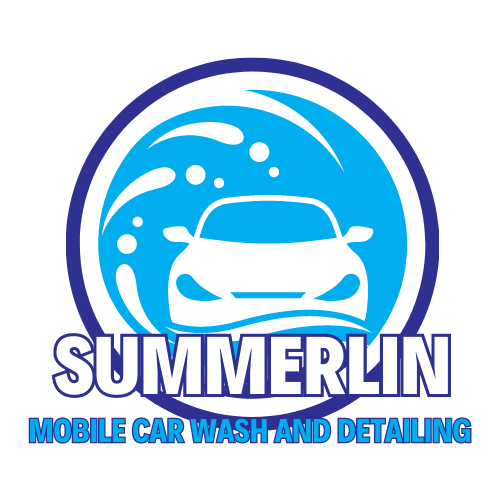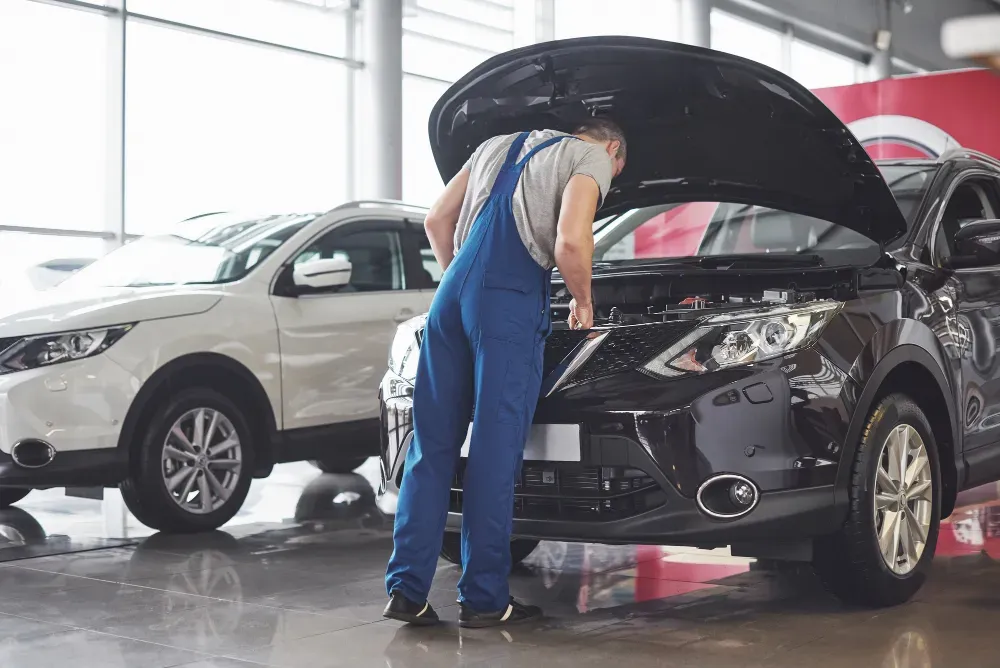How to Preserve Your Car’s Exterior in a Dusty Environment
Living in a dusty area can be tough on your car's paint job. Every day, tiny dust particles settle on your vehicle and can slowly damage its beautiful finish. Whether you live near a desert, construction site, or just a dusty road, protecting your car's exterior is crucial. This guide will show you practical ways to keep your car looking great despite challenging conditions.
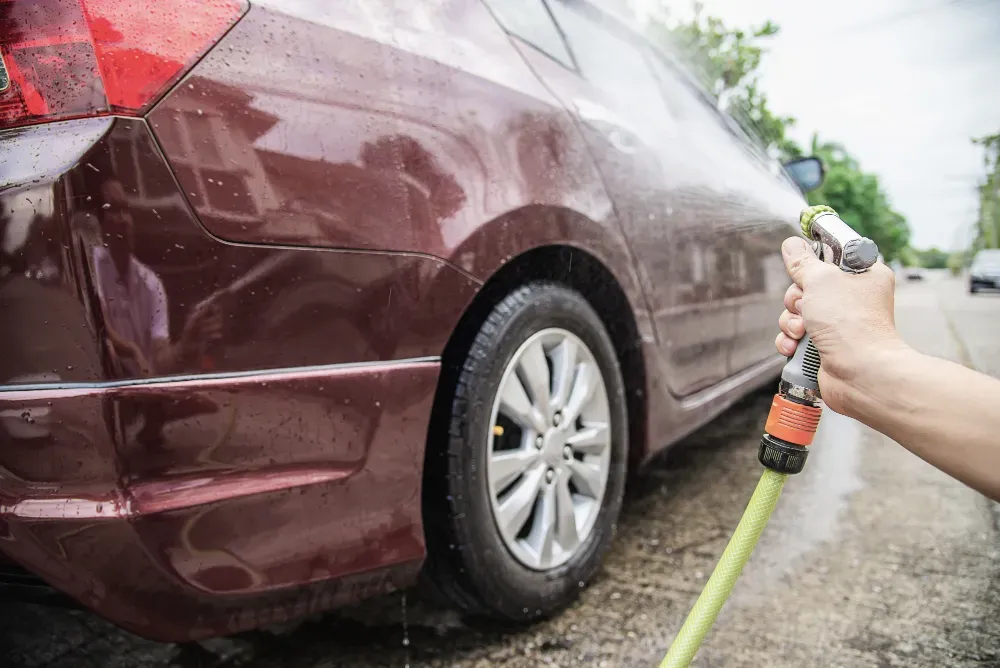
Understanding the Impact of Dust on Your Vehicle
Dust isn't just annoying—it's actually harmful to your car's exterior. Let's look at why dust is such a problem and how it affects your vehicle over time.
Common Types of Environmental Dust and Their Effects
Not all dust is created equal. Depending on where you live, your car might face different types of dust challenges:
- Desert dust: Contains fine sand particles that can scratch your paint when wiped incorrectly
- Construction dust: Often includes cement particles that can be extremely abrasive
- Road dust: A mix of dirt, tire particles, and pollution that sticks to your car
- Industrial dust: May contain chemical particles that can eat away at your paint's protective layers
Each type of dust poses unique risks. Desert dust, for example, often contains minerals that can cause tiny scratches when you wipe your car without proper lubrication. These micro-scratches might not be visible at first but will eventually dull your paint's shine.
How Dust Damages Your Car's Paint and Finish
When dust sits on your car, it doesn't just look bad—it actively damages your vehicle in several ways:
First, dust acts like sandpaper. When you touch or wipe a dusty surface without proper washing, you drag those particles across the paint, creating small scratches.
Second, dust absorbs moisture from the air, which can lead to water spots and mineral deposits on your clear coat. Over time, these spots can etch into your paint.
Third, some dust contains acidic components that gradually break down your car's protective coatings. This exposure leaves your paint vulnerable to UV rays, which causes fading and oxidation.
Most car owners don't notice these effects right away, but over months and years, the damage becomes obvious as your once-shiny car starts to look dull and old before its time.
Essential Tools for Dust Protection
Having the right tools makes all the difference when fighting dust. These items should be in every car owner's arsenal, especially if you live in a dusty environment.
Quality Covers and Their Benefits
A good car cover is your first line of defense against dust. But not all covers are effective in dusty conditions:
Look for covers specifically designed for dust protection with these features:
- Multiple layers of fabric to prevent dust from reaching the paint
- Breathable material that won't trap moisture underneath
- Elastic hems that create a tight seal around your vehicle
- UV-resistant fabric to provide sun protection
The best covers for dusty environments have a soft inner layer that won't scratch your paint and a tightly woven outer layer that blocks even fine dust particles. While quality covers cost more upfront, they save money in the long run by preventing expensive paint correction.
Indoor covers work great for garage-stored vehicles, while outdoor covers need to withstand both dust and weather. Some premium options even include lock systems to prevent the cover from blowing off in windy conditions—a common issue in desert areas.
Must-Have Cleaning Supplies
The right cleaning supplies make dust removal safe and effective:
- Two bucket washing system: One bucket for clean soap water and another for rinsing your wash mitt
- Pressure washer or hose with adjustable nozzle: To rinse dust off before touching the surface
- pH-neutral car wash soap: Regular household cleaners can strip wax protection
- Grit guards: These sit at the bottom of your buckets to trap dust particles
- Waffle-weave drying towels: To prevent water spots in hot, dusty climates
Always rinse your car thoroughly before washing to remove loose dust. This simple step prevents those particles from scratching your paint during the wash process.
Microfiber Products Worth Investing In
Microfiber tools are essential for dust-free cleaning:
High-quality microfiber cloths trap dust instead of pushing it around. The best options have a high GSM (grams per square meter) rating of 350 or above, making them plush enough to safely lift dust from your paint.
Invest in different colors of microfiber for different areas of your car. This prevents cross-contamination—you don't want to use the same cloth on your dusty wheels and then on your paint.
Keep a small microfiber towel inside your car for quick dust removal from your dashboard and interior surfaces. These towels can be washed and reused hundreds of times, making them economical and environmentally friendly compared to disposable wipes.
Creating a Regular Maintenance Schedule
Consistency is key when protecting your car from dust. A regular schedule keeps dust from building up and causing damage.
Daily Quick Checks
Take these simple steps every day to minimize dust damage:
- Visual inspection: Look for fresh dust accumulation, especially after windy days
- Quick dusting: Keep a clean microfiber cloth in your car for light dusting of the dashboard and interior
- Cover check: If you use a car cover, make sure it's secure and not allowing dust underneath
These daily checks take less than five minutes but can prevent dust from settling into your paint and interior surfaces. The quick dusting should focus on horizontal surfaces where dust accumulates most quickly.
If you notice heavy dust after a storm or construction activity nearby, consider a rinse-only wash (without soap) to remove loose particles before they can scratch your paint.
Weekly Cleaning Routine
Set aside time each week for more thorough cleaning:
- Pre-rinse: Always start by rinsing off loose dust
- Two-bucket wash: Use the proper technique to prevent scratching
- Wheels and tires: Clean these last to avoid splashing dirty water on your clean paint
- Dry immediately: In dusty areas, air-drying leads to water spots and more dust sticking to damp surfaces
- Quick spray wax: Apply after washing to add an extra layer of protection
Many car owners in dusty regions wash their vehicles early morning or evening when it's cooler and less windy. This timing helps prevent water spots and keeps new dust from immediately settling on your freshly washed car.
Monthly Deep Clean Process
Once a month, give your car extra attention:
- Clay bar treatment: Removes embedded dust particles that washing alone won't budge
- Polish (if needed): Addresses minor scratches from dust before they worsen
- Wax or sealant application: Provides lasting protection against dust adhesion
- Trim dressing: Protects plastic and rubber parts from dust and UV damage
- Interior deep clean: Vacuum and wipe down all surfaces to remove settled dust
This monthly routine might take 2-3 hours, but it's crucial for long-term protection. Many car enthusiasts in dusty regions set a specific weekend each month for this deep clean. The satisfaction of seeing your car shine despite challenging conditions makes it worth the effort
.
Professional Mobile Car Detailing Services
Sometimes, calling in the experts is the best approach, especially for busy car owners living in dusty environments.
When to Call the Professionals
Consider professional help in these situations:
- When dust has already caused visible damage to your paint
- Before and after dust storm seasons for extra protection
- If you lack proper washing facilities at home
- When you need specialized treatments like ceramic coating
- If your schedule doesn't allow for regular DIY maintenance
Professional detailers have equipment and products that most car owners don't, allowing them to safely remove dust without causing swirl marks or scratches.
What to Expect from Mobile Detailing Services
Mobile detailing brings professional services right to your driveway:
A good mobile detailer focused on dust protection will:
- Perform a thorough pre-wash rinse to remove loose dust
- Use foam cannons to encapsulate dust particles before contact washing
- Apply specialty products designed for dusty climate protection
- Offer advice on maintaining protection between service appointments
The best part about mobile services is convenience—no need to drive your clean car through dusty roads to get home after a detailing appointment.
Cost vs. Benefit Analysis
Is professional detailing worth the money? Consider these factors:
Professional mobile detailing costs:
- Basic wash and wax: $50-150 depending on vehicle size
- Full detail with clay bar: $150-300
- Ceramic coating application: $500-1500 for professional-grade products
Potential savings:
- Reduced need for paint correction ($500+ for severe cases)
- Extended paint life and better resale value
- No need to buy and store specialized equipment
- Time saved from DIY maintenance
Many car owners in dusty regions opt for a hybrid approach—regular DIY maintenance with professional services quarterly. This strategy provides excellent protection while keeping costs reasonable.
Protective Products That Really Work
The right products create a barrier between your paint and dust particles.
Waxes and Sealants Explained
These traditional protectants still have their place:
Carnauba wax gives your car that deep, warm shine but only lasts 4-6 weeks in dusty conditions. It's great for show cars but needs frequent reapplication for daily drivers in dusty environments.
Synthetic sealants provide longer protection—typically 3-6 months—and create a slicker surface that dust has trouble sticking to. Their main advantage is durability, making them popular for daily drivers in challenging climates.
The best approach is often layering—apply a synthetic sealant for protection, then top with a thin layer of carnauba for extra shine and hydrophobic properties. This combination gives you both durability and beauty.
Ceramic Coating Benefits
For serious dust protection, ceramic coatings are the gold standard:
Ceramic coatings form a semi-permanent bond with your paint, creating a hard, glass-like layer that:
- Repels dust and makes washing easier
- Lasts 2-5 years with proper maintenance
- Provides excellent UV protection
- Creates an extremely slick surface that dust struggles to stick to
While more expensive upfront, these coatings often pay for themselves through reduced maintenance needs and preserved paint quality.
DIY vs. Professional Application
Should you apply protective products yourself or hire a pro?
DIY advantages:
- Cost savings (materials only)
- Satisfaction of doing it yourself
- Flexibility to apply touch-ups as needed
Professional advantages:
- Proper surface preparation (critical for product bonding)
- Access to professional-grade products
- Warranty on work performed
- Experience in achieving even, streak-free application
For waxes and spray sealants, DIY application is usually fine. For ceramic coatings, professional application generally yields better, longer-lasting results. The surface preparation alone—which includes clay bar, machine polishing, and panel wipe—requires skills and tools that most car owners don't have.
Special Considerations for Dusty Regions
Different dusty environments require specialized approaches to car care.
Desert Climate Car Care Tips
Desert areas pose unique challenges:
- Extreme heat: Park in shade whenever possible, as heat bakes dust into your paint
- Low humidity: Use quick detailer sprays more frequently as dust doesn't dampen and settle
- Sun exposure: Apply UV protectants to prevent paint fading and interior cracking
- Sand storms: Consider temporary vinyl protection for severe dust storm seasons
In places like Arizona or Nevada, many car owners carry filtered water for spot-free rinsing after dust storms. The minerals in tap water combined with desert dust can leave stubborn water spots that damage clear coats.
Construction Zone Protection Strategies
Living near construction requires extra vigilance:
- Temporary paint protection film: Consider applying this to the front end and other vulnerable areas
- More frequent washing: Rinse construction dust off daily if possible
- Dedicated parking: Try to park upwind from construction sites
- Talk to the site manager: Some construction companies will provide car covers to nearby residents
Construction dust contains cement particles and other abrasives that are particularly harmful to paint. Don't wait for your regular wash schedule if your car gets covered in this type of dust.
Long-term Strategies for Paint Protection
Beyond regular cleaning, these strategies help minimize dust exposure in the first place.
Garage Solutions and Alternatives
The best protection is keeping your car out of dust entirely:
- Enclosed garage: The ideal solution, especially with air filtration
- Carport with side panels: Offers good protection at lower cost
- Portable garages: Temporary structures that can be quite effective
- Basement parking: Worth the extra cost in extremely dusty areas
If building or buying a garage isn't an option, even partial coverage helps. Some car owners in dusty regions install simple pipe frames with canvas tops to create inexpensive shelters for their vehicles.
Strategic Parking to Minimize Dust Exposure
Smart parking choices make a big difference:
- Direction matters: Park with your car facing away from the prevailing wind
- Height considerations: Dust settles downward, so higher floors in parking garages typically have less dust
- Natural barriers: Use buildings, walls, or vegetation as windbreaks
- Surface types: Paved areas generate less dust than gravel or dirt lots
At work or while shopping, take an extra minute to find a spot that offers some protection from dust. Parking under a tree might mean dealing with bird droppings or sap, but in very dusty areas, this is often preferable to heavy dust accumulation.
By following these strategies and maintaining a consistent care routine, you can keep your car's exterior looking great even in the dustiest environments. Remember that prevention is always easier than correction when it comes to dust damage. With the right tools, products, and habits, your car can stay clean and protected despite challenging conditions.
